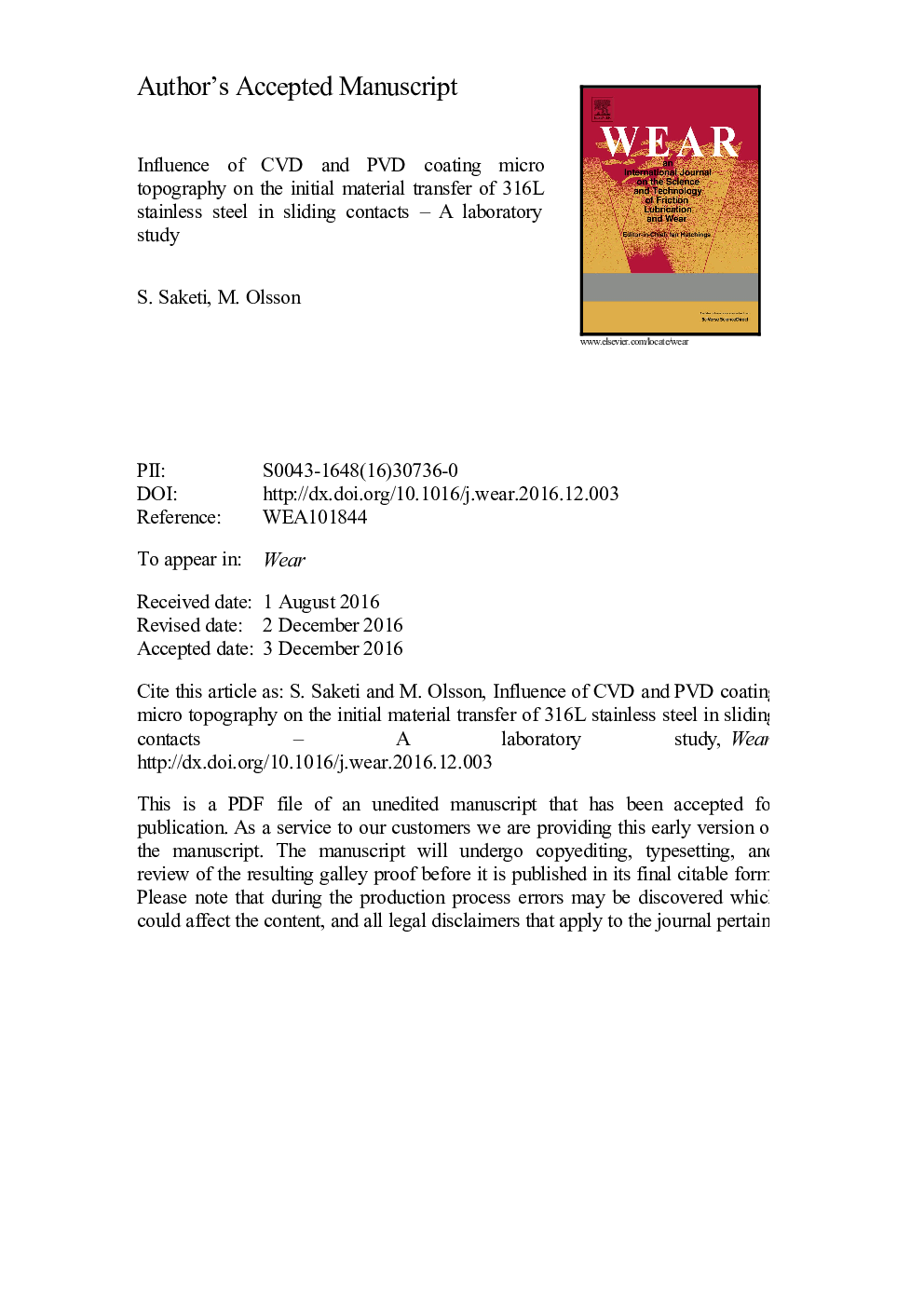| Article ID | Journal | Published Year | Pages | File Type |
|---|---|---|---|---|
| 4986410 | Wear | 2017 | 16 Pages |
Abstract
The results show that the intrinsic topography of the as-deposited CVD and PVD coatings promotes material transfer. For the as-deposited CVD coating the nanoscale topography of the crystals controls the transfer while for the PVD coating the µm-scale droplets and craters control the transfer. Post-polishing of the coating, especially in combination with pre-polishing of the substrate, significantly improves the tribological performance of the surface reducing the friction coefficient and the material transfer tendency. However, the presence of µm sized droplets and craters in the PVD coating limit the possibility to obtain a smooth post-polished surface and its resistance to material pick-up. In contrast, post-polishing of the CVD coating does not suffer from intrinsic coating defects which results in low friction and a very high resistance to material pick-up.
Related Topics
Physical Sciences and Engineering
Chemical Engineering
Colloid and Surface Chemistry
Authors
S. Saketi, M. Olsson,
